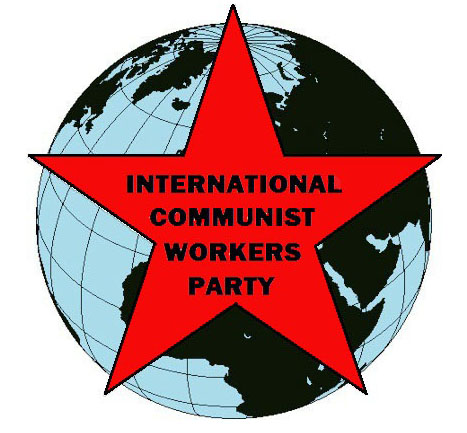
 |
FIGHT FOR COMMUNISM! |
International Communist Workers Party | |

The last article described the “military communism” of First Headquarters peasant rebels and the attempt of Wuhan students in the Juipai group to form a new party to fight for a Chinese People’s Commune. In mid-1968, Communist Party leaders used the People’s Liberation Army to smash efforts to move quickly to communism.
An upsurge in the class struggle inspired Wuhan “ultra-leftists” to regroup in spring 1969. But they were politically in retreat.
Following classical Marxism, they hoped that the new ruling revolutionary committees could be “transitional forms” on the way to a Paris Commune-type structure. They still believed in a peaceful transition from socialism to communism although the repression had smashed any illusions that this might happen quickly.
So they became reformists. They hoped to limit the power of the revolutionary committees, instead of pursuing a long-term strategy to overthrow them.
The ultra-leftists demanded that the workers’ congress (which had no real power) should be allowed to supervise the revolutionary committee: “the workers’ congress must exercise leadership.” This appealed to a broad range of rebel groups, which were represented in the workers’ congress. But it ended the ultra-left’s potential as a revolutionary communist force.
Ultra-leftists framed their arguments using quotations from Mao. But their proposal flatly contradicted Mao’s principle of unified top-down leadership.
In late September, the Maoist leadership arrested a dozen leaders of Juepai (now called Bei-jue-yang). It denounced them as “a hotchpotch manipulated by a handful of renegades, spies, and counter-revolutionaries.” The New Thought “ultra-left” movement was over, and with it the real Great Proletarian Cultural Revolution.
Mao’s Cultural Revolution agenda failed, too. It ended with the rise of Deng Xiaoping, the most open capitalist-roader of them all. But its brightest moments – like those of the Paris Commune of 1871 and the 1917 Bolshevik Revolution – help light the way to our communist future.
Lessons of the Great Proletarian Cultural Revolution
Millions fought bloody battles, hoping to get rid of the capitalist bureaucrats that oppressed them. The “capitalist road,” however, is inherent in socialism. Socialism is a form of capitalism. It cannot evolve peacefully into communism. Only a massive revolutionary fight for communism can finally defeat capitalism and end class society.
Neither the New Thought/Ultra-left movement nor its supporters elsewhere understood this. That was their fatal error. But we have much more to learn from them:
The masses make history. But a small group can make a big contribution to the world communist movement. Juipai might have had a few dozen members. Shengwulien was even smaller. Yet their exposure of Mao’s “red bourgeoisie” advanced workers’ understanding of revisionism worldwide.
Loyalty and party unity are important, but struggle over the line matters more. Juipai made a heroic effort to split radical activists from the Chinese Communist Party leaders who had betrayed their ideals. Party leaders knew that masses could be won to the ultra-left’s line – and feared it. They started the cult of Mao to prevent this.
The ultra-left focused on “smashing the old state machinery” without talking much about how to organize communist society. Their model was the Paris Commune but they didn’t write about how it worked, much less its limitations. Today we understand that to mobilize the masses for communism we need mass discussion of how we plan to organize communist society.
From the Defeat of the Ultra-Left to the Victory of Open Capitalism (1969-1978)
The “ultra-leftists” were the most advanced revolutionary communists of their time. Virtually the entire leadership of the Chinese Communist Party – including Mao’s circle – had become counter-revolutionary and pro-capitalist, all in the name of socialism. They were responsible for most of the abuses committed in the name of “cultural revolution.”
After suppressing the real left, party leaders cynically attacked anyone else who disagreed with their line as “ultra-left.” That included Lin Biao, the Gang of Four, and (after 1978) even the line of Mao from 1956 until his death in 1976. Don’t confuse these factional fights with the class struggle that this series has described.
Committed grass-roots communists continued to fight to transform education, health care and other aspects of socialist society. We are inspired by the best of these efforts, but we must recognize them as reformist.
Mobilizing the masses to fight for and build communist society will enable us to realize the aspirations of millions of communists who came before us – and more. We have a world to win!